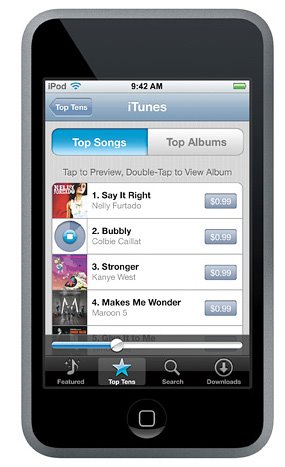group will train you to troubleshoot and solve technical situations on our supported systems. You will be providing technical phone support for Reynolds and Reynolds hardware to customers and Field Service personnel. Supported hardware includes terminals, printers, modems, networking equipment, which includes switches/hubs, routers, wireless LAN equipment, and fiber optic equipment. You will have the opportunity to work with some of the latest hardware and software currently available.
You will also have the opportunity to test new and existing equipment and create support documentation as well as recommend changes to new and existing products to enhance their reliability and performance.
We are looking for someone who is self-motivated, goal oriented, possesses a high level of confidence in their abilities, is able to work in both a team and individual environment, and has above average communication skills.
A comprehensive training process is provided that will cover each piece of equipment you will be asked to support. Training includes computer-aided instruction, lecture, and individual hands-on training. All materials and tools will be provided.
Some shift work is required and these shifts will be rotated weekly. After training is completed and proficiency is achieved you will be placed in the rotation for periodic on-call pager duty.
Less than two years ago, Gregory E. Bledsoe Sr. and Joseph Lincoln merged a couple of homegrown businesses that originally made house calls to repair sick PCs.
Today, Lincoln-Bledsoe Global Technologies is an international information technology company that keeps technical support systems running smoothly for multimillion-dollar corporations in the United States and Australia.
Bledsoe and Lincoln attribute this success to their backgrounds working for major companies, the foresight to keep their day jobs as fledgling entrepreneurs, a willingness to play off each other’s strengths and the ability to rebound quickly from mistakes.
Not only do they stay ahead of industry trends and emerging technology, but they also know when to delete a less profitable segment of the business and grab a better opportunity.
By the time Lincoln and Bledsoe merged their two companies in 2006, they already had 12 years of combined entrepreneurial experience. They had also worked in IT for Exxon Mobil Corp., Anadarko Petroleum Corp., BellSouth and the old Houston Lighting & Power Co., where they met in 1994. Those experiences made them realize they could provide similar services to smaller businesses.
“We want to be able to deliver what we saw in corporate America to small and mid-sized companies that traditionally could not afford it,” Lincoln says.
Both started small, with the home-computer market.
Bledsoe was the first to test the waters. In 1999, while working at Exxon Mobil, he and a friend launched a business wiring new homes for computer networks, eventually expanding into PC repair. Bledsoe continued the enterprise after moving to Anadarko as a technical analyst.
Meanwhile, Lincoln was at Exxon when he heard President Bush’s post-9/11 appeal to start small businesses. He founded Joey’s Computer Services, complete with kangaroo logo and radio ads. Like Bledsoe, he juggled his corporate job and home-based venture.
Although successful, the solo enterprises taught them several lessons.
Some of Bledsoe’s early success, for instance, involved sheer luck and moxie. Although he and his partner were skilled technicians, they knew little about running a business. They winged it during a chance meeting with a contractor building George Foreman’s house, Bledsoe says. They pretended to know what “CCTV” (closed-circuit television) was — and then later attended a CCTV seminar. They were clueless when the contractor mentioned a “draw check.” And speechless when he handed them a check for $50,000.
“We didn’t even have a bank account,” Bledsoe recalls. “So we take this $50,000 check, and we kind of look at it and look at it and look at it. And then we went to Chase and opened up a small-business account.”
Lincoln, meanwhile, had a crash course in labor laws when a former worker filed for unemployment. He also got a rude awakening about employee theft.
“There are very strict laws that you have to follow in corporate America, and I ... knew maybe one,” he says. “My ignorance of those laws impeded my growth. As an entrepreneur, all I wanted was the phone to ring, techs to bring in dollars and invoices, to advertise on the radio, with very (few) controls in place. I had theft, I had employees scheming, I had shrinkage with inventory.”
Lincoln and Bledsoe realized they needed to get focused. Bledsoe’s supervisors ultimately asked him to choose: Anadarko or his own company. He went solo.
Lincoln discovered he couldn’t handle so much business with just a few techs. And Joey’s Computer Services was finally generating sufficient money that he could leave Exxon Mobil.
Shortly before they merged in 2006, Lincoln and Bledsoe had discovered that on-site PC repair was not only costly for them, but for customers as well. People didn’t want to pay a technician $200 to fix a $350 desktop. So they decided to focus exclusively on corporate accounts.
“We saw it as a dying entity, (so) we dumped our retail segment completely,” Lincoln says. “We’ve become more profitable, more manageable and have fostered better relationships.”
Today, Lincoln-Bledsoe has between 50 and 70 customers, including chemical companies, law firms and insurance companies. The company maintains, manages and repairs some 50 servers and 644 machines for these customers. Almost all of the services are handled remotely, from Lincoln-Bledsoe’s Houston office. “House calls” are rare today. In fact, the company’s catchphrase is “Your Remote Control.”
That remote includes, among other services, a network operations center that maintains and monitors customers’ servers; a help desk that handles work orders submitted by companies online; and a project team that devises a thorough IT project plan, provisions equipment, trains customers and manages the system.



